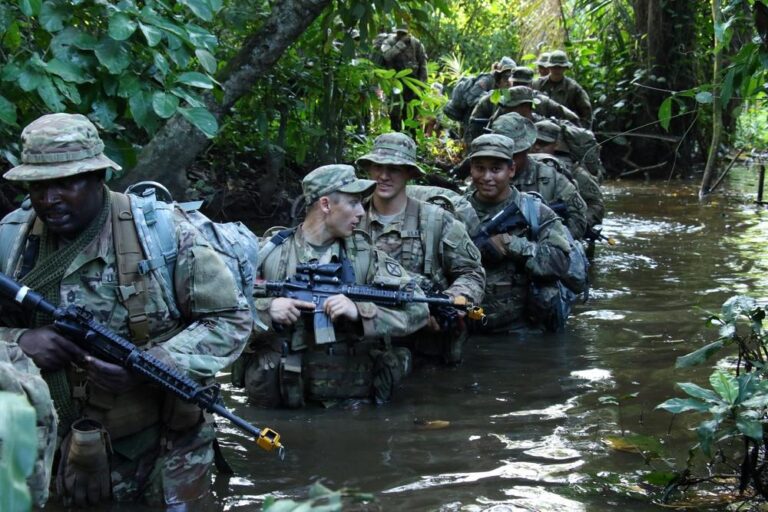India’s longstanding battle against jungle insurgency, marked by decades of conflict with Maoist rebels in some of the country’s most remote and vulnerable regions, poses one of the nation’s most complex security challenges. As government forces intensify operations aimed at dismantling these armed groups, questions arise not only about the feasibility of completely eradicating the insurgency but also about the resulting human cost. This article examines the multifaceted struggle to bring stability to affected areas, assessing whether a definitive end to the violence is within reach and at what price to civilians and combatants alike.
The Roots of India’s Jungle Insurgency Understanding Historical Grievances and Socioeconomic Factors
The insurgency gripping India’s dense forest regions is deeply entrenched in decades-old grievances that continue to fester among marginalized tribal communities. These groups, often disenfranchised and economically neglected, have long perceived the state as an oppressive force infringing on their ancestral lands. At the heart of the conflict lies a chaotic legacy of land dispossession, forced displacements for industrial projects, and a lack of political representation. The absence of sustainable development initiatives tailored to local needs has left many feeling alienated, fueling support for armed rebellion. While the government frames the insurgency predominantly as a law and order challenge, underlying socioeconomic disparities make peaceful resolution elusive.
- Historical injustices: centuries of exploitation under colonial and postcolonial governance models.
- Economic deprivation: limited access to education, healthcare, and employment opportunities.
- Resource conflicts: competition over mineral-rich territories critical to both indigenous livelihoods and national industry.
- Political marginalization: insufficient autonomy and representation within democratic institutions.
This volatile mixture of historical neglect and ongoing economic exclusion has perpetuated a cycle of violence and mistrust. Efforts to quell insurgency purely through military means, as seen in various phases over the decades, have often compounded resentment and led to human rights concerns. The path forward demands a nuanced approach-one that acknowledges the deep historical wounds while prioritizing community-led development and inclusive governance. Without addressing these root causes, the conflict risks further entrenchment with devastating human costs on all sides.
| Factor | Impact on Insurgency | |
|---|---|---|
| Land Dispossession | Loss of livelihood, rise in militancy | |
| Factor |
Impact on Insurgency |
|
| Land Dispossession | Loss of livelihood, rise in militancy | |
| Forced Displacement | Alienation and deepening grievances | |
| Historical Injustices | Long-term resentment and distrust of authorities | |
| Economic Deprivation | Limited opportunities leading to frustration and support for rebellion | |
| Resource Conflicts | Competition over mineral-rich areas intensifying disputes | |
| Political Marginalization | Lack of representation fueling insurgent narratives |
Summary:
The insurgency in India’s forest regions stems from a complex interplay of historical exploitation, economic hardship, and political exclusion of tribal communities. Central issues like land dispossession and forced displacement have stripped many of their livelihoods, driving them toward militancy. The persistent neglect, limited
Counterinsurgency Strategies Assessing the Balance Between Military Action and Community Engagement
Effective counterinsurgency in India’s dense forest regions demands a delicate calibration between aggressive military operations and meaningful community involvement. While armed forces have ramped up their presence to dismantle rebel networks, such actions alone often fail to address the root causes of unrest. Tactical victories frequently risk alienating local populations, whose support is critical for sustainable peace. Conversely, investing in community engagement-education, infrastructure, and dialogue-can erode insurgent influence but requires patience and resilience against intermittent violence.
Balancing these approaches highlights several challenges and opportunities:
- Military precision must minimize collateral damage to avoid fuelling grievances.
- Community trust-building efforts should focus on inclusive development, transcending ethnic and economic divides.
- Integration of local intelligence empowers security forces with culturally nuanced insights.
- Political will and transparency are essential to legitimise both security and development initiatives.
| Aspect | Military Action | Community Engagement |
|---|---|---|
| Primary Focus | Neutralizing insurgents | Building local trust |
| Timeframe | Short-term impact | Long-term stability |
| Risks | Collateral damage | Slow progress |
| Measure of success | Territorial control | Community cooperation |
Weighing the Human Cost Evaluating Civilian Impact and Pathways to Sustainable Peace
Behind the military operations targeting insurgent groups in India’s dense forest regions lies a stark reality for countless civilians caught in the crossfire. Villages near conflict zones often bear the brunt of displacement, loss of livelihoods, and psychological trauma. Reports indicate that routine security measures, while aimed at dismantling armed networks, sometimes result in collateral damage-homes destroyed, families separated, and communities pushed further into despair. Activists and human rights observers warn that without addressing these human costs, the cycle of violence risks perpetuating rather than resolving the conflict.
Key factors exacerbating civilian suffering include:
- Lack of access to healthcare and education during periods of heightened military activity
- Forced evictions and restrictions on movement by security forces
- Stigmatisation of indigenous populations suspected of harbouring insurgents
- Economic marginalisation due to disrupted agriculture and trade
Efforts towards sustainable peace must balance robust counter-insurgency strategies with meaningful engagement of local communities and investment in socio-economic development. Encouragingly, dialogue initiatives and rehabilitation programs have yielded pockets of success, proving that peacebuilding is viable but requires long-term commitment. The table below outlines the comparative impacts of military vs. community-centric approaches on civilian well-being:
| Approach | Civilian Displacement | Economic Impact | Long-term Stability | |||||||||||
|---|---|---|---|---|---|---|---|---|---|---|---|---|---|---|
| Military Operations | High | Negative | Uncertain | |||||||||||
| Community Engagement | Low |
If you need help with further content or formatting, feel free to ask! Concluding RemarksAs India continues its decades-long struggle against jungle insurgency, the path to eradication remains fraught with complexity. While recent security operations and development initiatives have yielded some progress, the human cost-marked by loss of life, displacement, and social disruption-raises difficult ethical and strategic questions. Ultimately, the success of any solution will depend not only on military might but also on addressing the deep-rooted political and socio-economic grievances that fuel the conflict. As policymakers weigh their options, the challenge lies in balancing security imperatives with the protection of human rights and the pursuit of lasting peace in India’s restive heartlands. |




